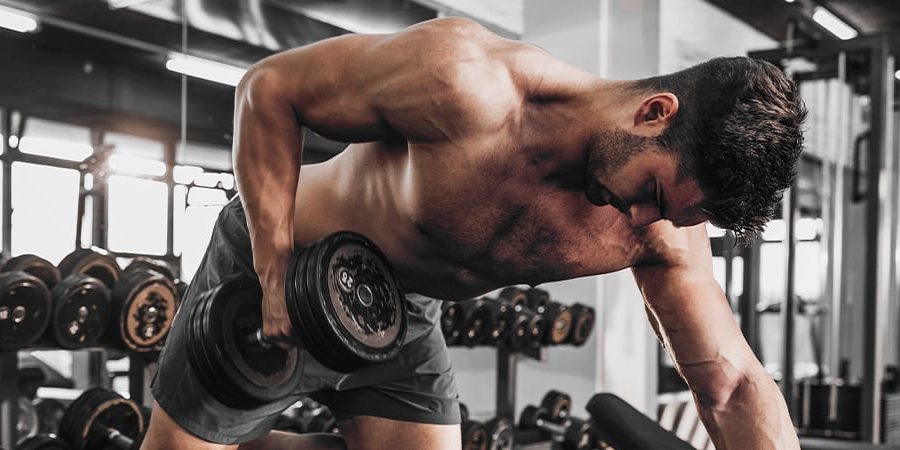In the ever-evolving field of resistance training, the concept of velocity loss (VL) has emerged as a critical metric for optimising workout effectiveness. This article delves into the intricacies of VL, explaining its significance and the ways it can be measured and monitored. By understanding VL, we as personal trainers can fine-tune training volumes and tailor resistance workouts to achieve specific goals, whether it’s enhancing muscle hypertrophy or boosting athletic performance. Drawing on the latest research, including a comprehensive systematic review and meta-analysis, we will explore strategies for adjusting VL thresholds to maximise training outcomes and provide practical insights for trainers aiming to accelerate our clients’ fitness journeys.
Understanding Velocity Loss
Velocity loss (VL) refers to the reduction in movement speed experienced during a set of resistance training exercises. Monitoring VL is crucial as it provides insights into the level of fatigue and the effectiveness of the training stimulus. By adjusting VL thresholds, we can tailor our clients’ workouts to specific goals, whether it’s enhancing muscle hypertrophy, strength, or athletic performance.
VL is important because it helps in controlling training volume and ensuring that the desired intensity is maintained throughout the workout. Higher VL thresholds generally induce greater muscle fatigue and metabolic stress, which can be beneficial for muscle growth. Conversely, lower VL thresholds help maintain neuromuscular performance, which is essential for athletes requiring explosive strength and speed.
Measuring and Monitoring Velocity Loss
To measure and monitor VL, we can use various tools and technologies such as linear position transducers, wearable accelerometers, and mobile applications designed for velocity-based training (VBT) e.g Metric VBT | Barbell velocity tracking & bar path app. Or Spleeft App | Velocity Based Training VBT These devices track the speed of each repetition, allowing us to set specific VL thresholds and adjust training loads accordingly.
For example, we might decide to stop a set once a 20% reduction in movement speed is detected, indicating our client has reached the desired level of fatigue. This approach helps in preventing overtraining and ensures that each set is performed with the appropriate intensity.
Optimising Training Volume with Velocity Loss
Adjusting training volume using VL thresholds involves setting specific percentage reductions in movement speed to achieve different training outcomes. For hypertrophy, higher VL thresholds (e.g., 40-50%) are often used to maximise muscle fatigue and metabolic stress. For strength and performance, lower VL thresholds (e.g., 10-20%) are preferable to maintain high-quality repetitions and neuromuscular performance.
We can start by determining a client’s baseline performance and then implement VL thresholds based on their specific goals. Regular monitoring and adjustments are necessary to ensure the training remains effective and aligned with their progress.
Benefits and Drawbacks of High vs. Low VL Thresholds
High VL thresholds are beneficial for promoting muscle hypertrophy due to the increased fatigue and metabolic stress. However, they can also lead to greater muscle damage and longer recovery times, which might not be ideal for clients who need to maintain peak performance levels.
On the other hand, low VL thresholds help in preserving neuromuscular function and ensuring that clients can perform high-quality, explosive movements. The drawback is that these thresholds may not induce sufficient fatigue for significant muscle growth, requiring a careful balance depending on the client’s goals.
Tailoring Resistance Training for Hypertrophy vs. Performance
To prioritise muscle hypertrophy, we can implement higher VL thresholds. This approach ensures that the muscles are subjected to prolonged tension and metabolic stress, essential factors for muscle growth. A typical hypertrophy-focused session might involve working until a 40-50% reduction in movement speed is observed, ensuring the muscles are thoroughly fatigued.
We should also consider incorporating a variety of exercises and rep ranges to target different muscle fibres and promote comprehensive muscle development.
Training Adjustments for Improving Jumping, Sprinting, and Velocity Performance
For improving athletic performance in activities such as jumping, sprinting and velocity against submaximal loads, lower VL thresholds are recommended. This approach helps in maintaining the quality of each repetition and prevents excessive fatigue that can hinder neuromuscular performance.
Training sessions focused on performance should involve stopping sets once a 10-20% reduction in speed is detected. This strategy ensures the client can continue to perform explosive movements effectively without compromising their speed and power.
Understanding and implementing VL thresholds in resistance training is crucial when we’re aiming to optimise training outcomes for clients. By measuring and monitoring VL, adjusting training volume, and tailoring VL thresholds to specific goals, we can enhance muscle hypertrophy or athletic performance as needed. The balance between high and low VL thresholds will depend on individual goals, ensuring that each training programme is both effective and sustainable.
References
Jukic, I., Pérez Castilla, A., García Ramos, A., Van Hooren, B., McGuigan, M. R., & Helms, E. R. (2022). The Acute and Chronic Effects of Implementing Velocity Loss Thresholds During Resistance Training: A Systematic Review, Meta-Analysis, and Critical Evaluation of the Literature. Sports Medicine, Click here to review the full research article.
Take the Next Step in Your Personal Trainer Career
Are you ready to take your personal training career to the next level? Our Level 4 Strength and Conditioning Coaching Course is designed to equip you with cutting-edge knowledge and skills, grounded in the latest scientific research. Dive deep into the principles of strength training and factors crucial for controlling training volume and optimising performance. Discover how different variables can impact muscle hypertrophy, strength, and endurance gains, as well as performance in jumping and sprinting. Learn to tailor your training programmes to achieve specific goals, ensuring your clients see the best results. Join us and become an expert in strength and conditioning, mastering the techniques that set elite trainers apart. Enrol today and transform your training approach with evidence-based strategies!
Strength & Conditioning Coaches Course – Distance Study

